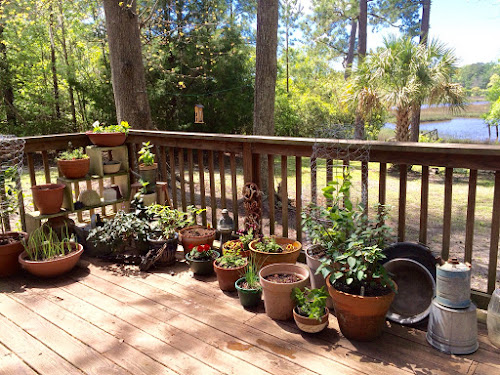Beneath this grassy field lie the tired bones of those who came to America on slave ships, were sold in the Charleston and Savannah slave markets and purchased to work the rice fields of the Lowcountry by white planters like the Huguenins of Roseland Plantation. The Huguenins owned 329 slaves who worked the 25,000 acres of Roseland Plantation rice and cotton fields.
The island we live on is surrounded by that plantation land.

The slave cemetery on Roseland Road is a beautiful resting place for those hardest working of slaves, those who built and labored in the disease and mosquito-ridden rice fields.
No one knows how many men, women, and children are buried here, who they were, how they died. If the graves of slaves were marked at all, it was with a pile of shells, a small bouquet of wildflowers, a wooden cross long ago turned to dust.
There are a few old marked graves, of slaves who died after the Civil War and Emancipation.
"Our Beloved Pastor, Rev. P. Smalls
Born Sept. 1, 1807, Died July 21, 1887"
One of the newest graves is that of a little boy, 8 years old, who was shot to death in the crossfire of bullets fired by three men who had been arguing all afternoon.
Khalil and the son of one of the men had been playing outside his grandmother's home when he was shot.
The men were between 19 and 37 years old and amongst the three, had previously been arrested in Beaufort County a total of 74 times!
~~~~~~~~~~~~
The remains of the plantation owners, the Huguenin family, lie under giant oaks a few miles away,
in a cemetery near where one of three plantation houses stood.
In this brick tomb are the bodies of three little Huguenin brothers -- Thomas, Theodore, and Lawrence -- who lived only 16 months, two years, and one day.
Though the planters made fantastic sums of money, it was not an easy life or one without tragedy and grief.
I wonder if their wives would say it was worth it.
Outside the brick walls at the back are the unmarked graves of the house slaves -- the cooks, personal servants, the nannies, laundresses, midwives, seamstresses.
The Writer thinks I'm a bit obsessed with slaves and slavery and all that. But I think it's that I am fascinated with a way of life, a history, a culture that as a northerner I knew very little about. Sometimes I feel like I am living in a foreign country, or on another planet! Anyway, I hope I haven't bored you.













































